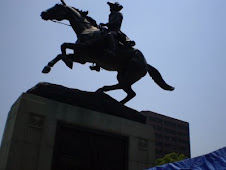It's all about the hat
Tinkerty Tonk discusses the significance of hats throughout history:
I was reading this article by Theodore Dalrymple on hats, which led me to this article on the Turco-Egyptian hat incident of 1932, which essentially makes Dalrymple's point: It all starts with the hat.
A scholarly work confirms Dalrymple's observations:
Until the 1960s, the article of clothing that performed the most important role in indicating social distinctions among men was the hat.... Several new types of hats appeared during the nineteenth century and were rapidly adopted at different social levels.... Because hats represented a more modest expense than jackets and coats, they provided an ideal opportunity for "blurring and transforming . . . traditional class boundaries" .... Men's hats were also used to claim and maintain, rather than to confuse, social status, as seen in the fact that specific types of hats became closely identified with particular social strata. Elaborate customs of "hat tipping" as a means of expressing deference to a man's superiors reflected the importance of the hat in marking class boundaries (McCannell 1973)....
In the nineteenth and early twentieth centuries, hats were worn by members of all social classes, including the lowest strata. In a photograph taken in Paris around 1900 of a group of ragpickers, twenty out of twenty-three wear hats or caps. In the same period, photographs of workers leaving factories (Borgé and Viasnoff 1993: 113) and of workers' demonstrations in Boston (Robinson 1993: 6) show virtually everyone wearing a hat or a cap.
My mother was certainly an adherent of this viewpoint. She would never leave home without her hat. Even if she was wearing a housecoat (a shapeless article now consigned to the dustbin of history), she would put on her hat and she was good to go, ready to face the world. It was not necessary to comb the hair under the hat, either.
My mother's hats looked like these.











No comments:
Post a Comment